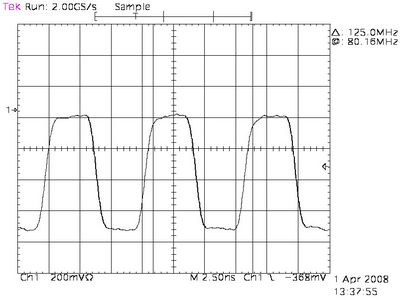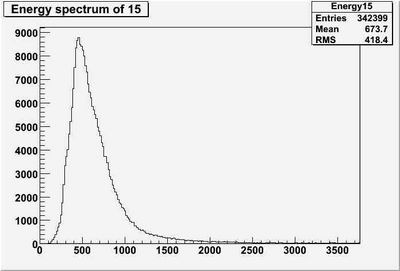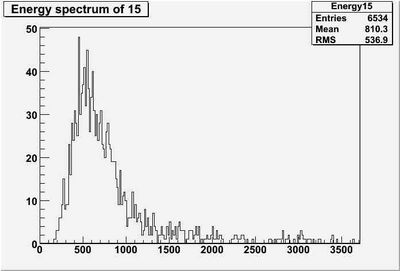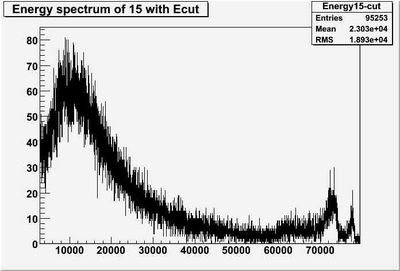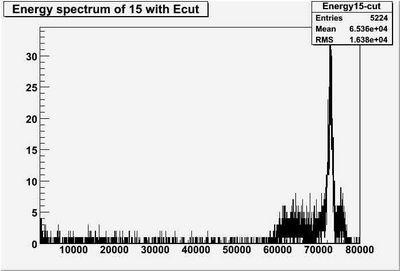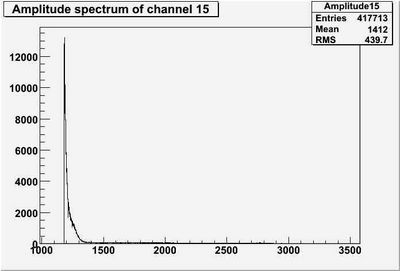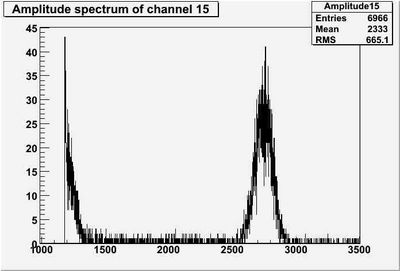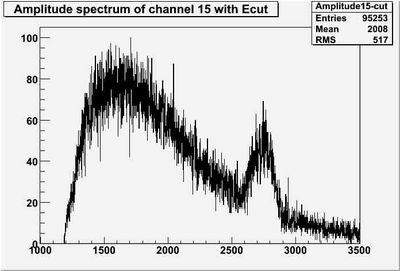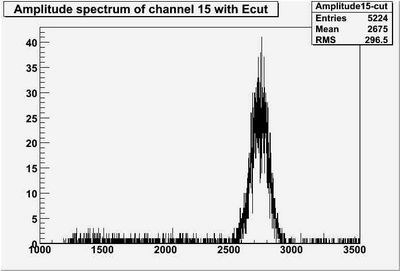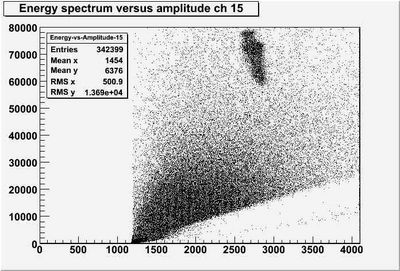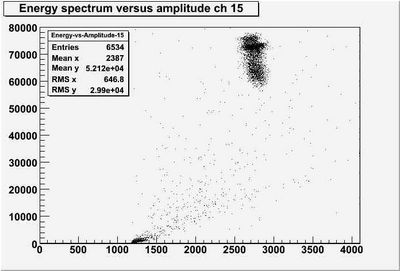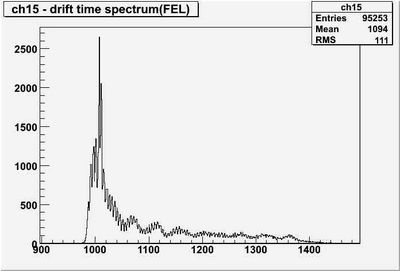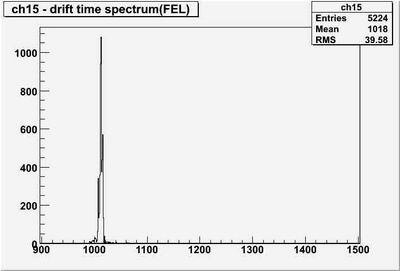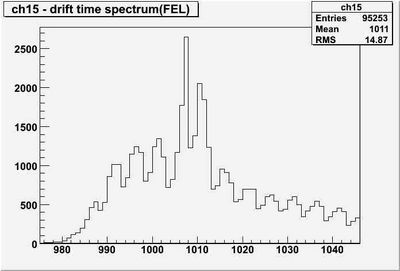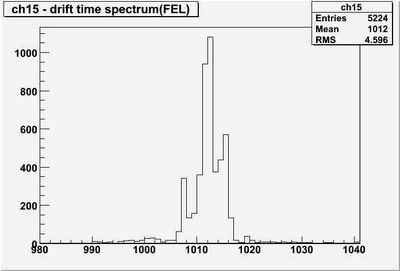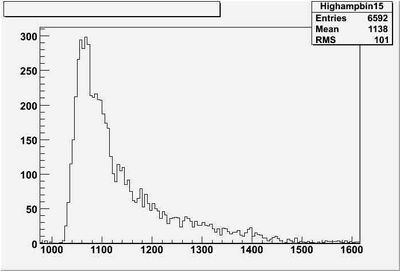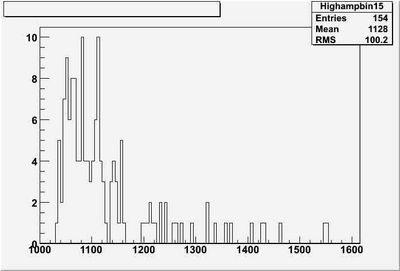CDC 09 04 2008
125 MHz Clock test
A scope trace can say more than a 1000 words:
Everything is set up to run with the external clock.
Change incident angle
Before we had the two scintillators positioned one above the other. In this way we selected cosmic rays with an incident angle of 90 degrees (compared to the straws). The upper scintillator is placed on the other end of the CDC: 2m away (in z) from the other scintillator. Before we had a rate of 0.65 Hz. I calculated the incident angle to be 17 degrees, which means that we expect a rate of 0.0556 Hz. We see a rate of 0.0767 Hz - that would mean a average incident angle of 20 degrees. I will take data till the new cable arrives (Wednesday) and then analyze the data and compare with previous situation.
FYI: we could tilt the chamber to any angle we want - we just have to be careful.
FADC timing
More analysis of cosmic data
The preAmp is not at Carnegie Mellon University - so I have some time to do some more analysis. I will always show two figures, on the left side is always with the cosmic rays at 90 degrees, the right side has the cosmic rays at 20 degrees (on average).
Let's start with the raw energy spectrum of straw 15
Everything below 1750 ADC channels is considered low energy noise and is therefore cut away. The resulting energy spectra are in figure 2a+b.
You see the funny structure in the end -> it does not changes with the incident angle of the cosmic rays => No physics in this thing.
Now what about the amplitude spectrum of ch 15, it is shown in figure 3 and 4 (without - with energy cut):
The preAmp is not at Carnegie Mellon University - so I have some time to do some more analysis. I will always show two figures, on the left side is always with the cosmic rays at 90 degrees, the right side has the cosmic rays at 20 degrees (on average).
Let's start with the raw energy spectrum of straw 15
There are two thing important here:
- There is a funny peak again that does not change when the incident angle changes - this is a problem when calculation overflows/total events (later more)
- The amplitude spectrum disappears when going to 20 degrees incident angle
The ratio overflows (amplitude) / total number of events:
- 0.0357 for 90 degree cosmic rays
- 0.0153 for 20 degree cosmic rays
What about the Energy as a function of amplitude spectra => is this funny structure correlated? Those are shown in figure 4a-b:
This funny structure is correlated!!! --> Is this the preAmp that clips?
Let's go on - How do the drift time spectra look like? THey are shown in figure 5a-b
Let's zoom in (figure 6a-b):
One can see a peaked structure in the right side and the same structure on top of the time spectrum shown in the left side. I wonder if this again is correlated with the funny structure before.
As last figure I would like to show the drift time spectrum of the overflow events. They are shown in figure 7a-b:
These overflows contain real events!
